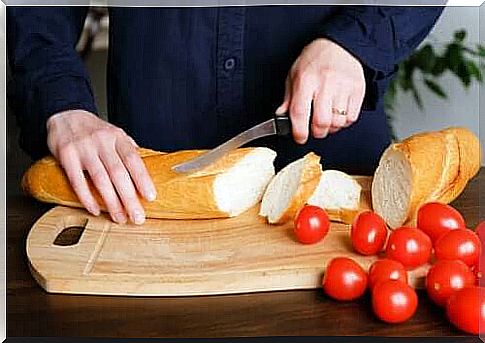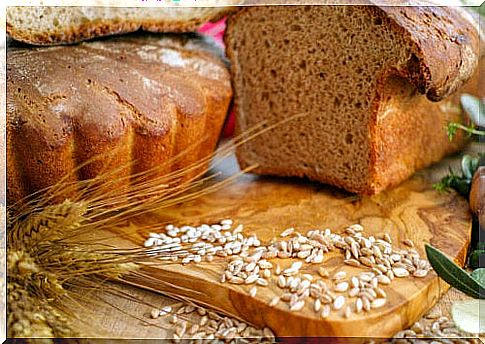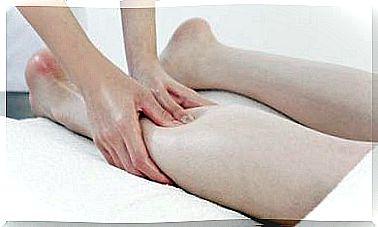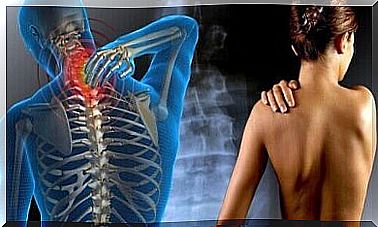Does Bread Fatten?

One of the most common questions associated with nutrition has long been whether bread is fattening. At the outset, we need to point out that no food alone will make you fat or lose weight, but rather a calorie balance.
Nevertheless, the effect of each food on insulin secretion and saturation can lead to excessive caloric intake and thus weight gain.
Bread is not fattened

Bread is a food that consists mainly of carbohydrates. Its energy content is about 300-400 kcal / 100 g of product. Bread, and especially fibrous wholemeal bread, can be incorporated into a balanced diet and does not in itself cause weight gain.
However, it should be noted that bread often has a high glycemic index, especially if it is made from refined white flour. This in turn leads to an increase in insulin and subsequent reactive hypoglycemia.
Eating bread results in momentary satiety followed by increased appetite. That’s why we’re talking about food that itself doesn’t properly starve at a distance, which in turn can lead to excessive calorie intake later on.
Bread should not be used as a side dish
Bread is a food that is often consumed in the wrong way. If bread is always eaten as a side dish, it will lead to an uncontrolled increase in calories, which is often not even noticed.
Bread can be consumed in moderation, but it should then be the main ingredient in the meal. In this way, bread is part of food, including other foods made from wheat flour, such as empanadas, pies, or pizzas. On the contrary, incorporating bread as a side dish to a meal is always a bad idea because it can increase your daily energy intake even completely without us noticing.
Sometimes the bread is also used by dipping it directly into the sauce. This method, in turn, significantly increases the amount of calories you get from a meal. In addition, its delicious taste can lead us to consume it more than we would need to consume.
In the same way, it is a product that is not usually taken into account when assessing the healthiness of a particular diet or the amount of energy it provides. Indeed, many people tend to enjoy bread along with the Main Dish on a daily basis, but at the same time, they do not know that it is a way that raises the caloric content of a meal in a significant way. Similarly, bread consumption is often challenging to control when eating out, as in many restaurants it is brought to the table without even asking for it.
Not all breads are the same
The energy content of bread depends largely on the ingredients it contains and the process used to make it. In this way, wheat bread is not the same thing as, for example, wholemeal rye bread, and handmade bread is not the same thing as store-bought bread.
In the case of bread, we should always strive to choose varieties that contain whole grains, in other words, bread whose ingredients have been processed as little as possible. In addition, hand-made breads, which include a wide variety of cereals or grains, have a much better nutritional quality than commercial and processed products.
The power to keep food hungry at bay

When planning a diet, it would be helpful to evaluate not only the nutritional value of each food, but also how well it keeps hunger at bay. On this basis, it would be best for us to try to avoid processed foods or foods high in sugar where possible.
Proteins and fats have a better ability to keep hunger at bay because they stimulate leptin and neuropeptide. In this way, we can avoid reactive hypoglycemia after consuming products containing white sugar, which in turn leads to increased appetite.
Foods high in fiber cause bloating of the stomach and intestines, which in turn stimulates receptors responsible for transmitting a feeling of satiety. This is one of the main reasons why we should prioritize the consumption of unprocessed foods in our diets.
In addition to providing benefits at both the macro- and micronutrient levels, these fibrous foods allow for more effective control of the glucose curve and appetite control mechanism.
If we choose foods that are high in carbohydrates, we should always give priority to foods that are made from whole grains. It has a high amount of fiber as well as a low glycemic index, which in turn stimulates insulin production much less than refined sugar.
After all, does bread make fat or not?
To sum up the question of whether or not bread fattens, we can say that no food fattens or loses weight on its own, and bread is no exception to this rule. At the same time, however, it is true that we tend to eat bread in the wrong way, as we usually use it as a side dish to food, not as the main raw material for food.
In other words, if we want to include bread in our diet, we should make it the main element of the whole meal. In addition, we should strive to avoid its separate consumption between meals; in this way, we also avoid an increase in insulin, which in turn leads to increased appetite.
As a general rule, we could say that in order to follow a healthy and balanced diet, we should always strive to avoid carbohydrate-rich and processed foods with a high glycemic index. Consumption of fibrous products, on the other hand, helps to ensure that the mechanism that regulates the feeling of satiety works properly, which in turn can prevent the emergence of many serious diseases.









